Table of Contents
ToggleIntroduction to Calculus
This blog is on an overview of calculus, most important subject in mathematics. It is designed for easy and interesting learning.
Calculus in Latin means “small pebble”. Romans used pebbles for addition and subtraction on a counting board. Therefore, this word “calculus” became associated with computation. Further the word “small” has great significance. We shall understand it when we go deep into Calculus to understand how its general formulae have developed using the concept infinitesimally small quantity.
Also visit my you tube channel and watch the video: An overview of Calculus. This is very interesting video. Also subscribe to my you tube channel.
https://www.youtube.com/channel/UCanYlmXvNXlAyWPclPIjDWA
Calculus
Calculus is the branch of mathematics which best handles motion and change. It is the branch of mathematics which deals with rates of change. In fact, to be precise “instantaneous” rate of change, over infinite small intervals. It’s much simpler much easy to model changes over infinitesimal small intervals in comparison to changes over finite intervals. Before Calculus was invented mathematics was all static. We did not have the tools to understand intricacies of rates of changes, the fabulousness of instantaneous rates of changes and their co relation to their functions or “equations”.
How Calculus Developed
Newton tried to describe the speed of a falling object. However, while doing this, he found that the speed of a falling object increases every second. During his time here was no existing mathematical explanation for this or a mathematical tool to handle it and describe it. The concept of movement and the rate of change had not yet been explored in the field of mathematics. Newton saw a void here and started working on it. Newton was highly fascinated and curious about planetary ellipses, why planets moved, orbits of planets, gravity, and gravitation force between planets, how planets stayed in orbit etc. He applied these concepts of rate of change to understand these things and calculus developed.
Leibniz also worked and led to the discovery of the calculus because of the work of his German predecessor, Johannes Kepler. Kepler was the first human being to accurately describe the motion of the planets in the solar system and described them in his 3 laws of planetary motion. However, Kepler did not have the benefit of the calculus during his time and thus had great difficulty in dealing with how to measure the rates of rates of change. Therefore, Kepler called for a “new geometry”, which he knew would be necessary for astronomy. It was this work which prompted Leibniz and put him on the path to discovering the calculus.
It is said that both Newton and Leibniz developed calculus independently.
Differential Calculus
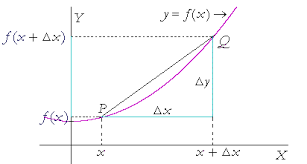
Look at the above figure. Y=F(x) curve has been shown above. There are two points on this curve, p and Q. We wish to find out the average rate of change of function F(x) or y with respect to x at point P. for this we take two points P and another point Q nearby. At point P the value of the value along X axia is x and the value of the function f(x) for y plotted along Y axis is f(x).
Similarly for point Q these values are (x+∆x) and f(x+∆x) or ∆y
Therefore, the average rate of change of y with respect to x between points P and Q is:
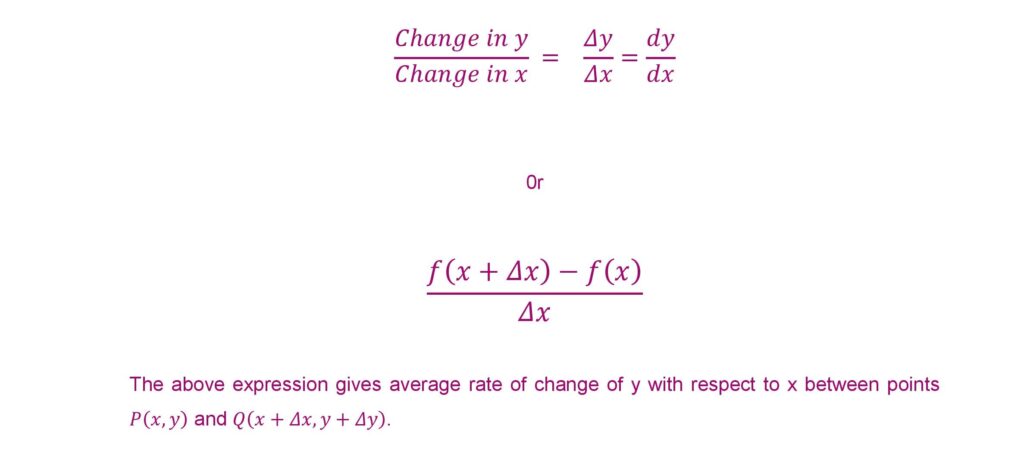

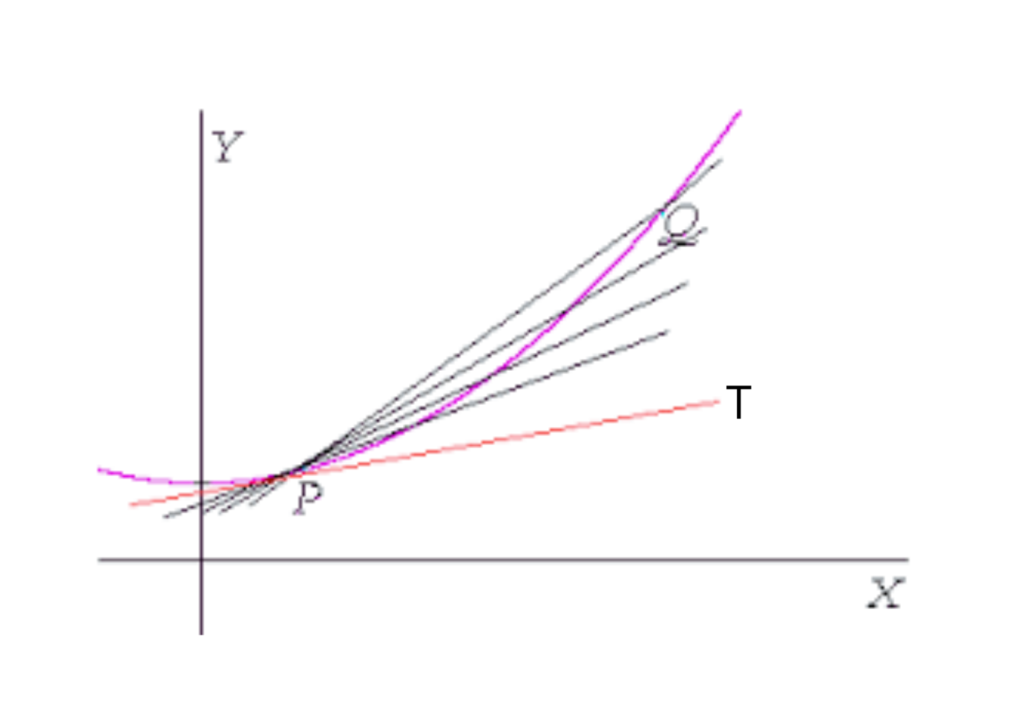
In the above figure, the secant line PQ is coming downward so that point “Q” is coming downward on the curve as closer and closer to point P. Exert your mind a bit. Consider point Q closer to pint Q. Closer than the close you can think of. Point Q is Infinitesimally closer to point P. This of any closeness it is closer than that! Note in this condition the secant line line “PQ” becomes a tangent line PT to the f(x) curve at point “P”. See the line PT is tangent to the f(x) curve in violet colour at point ‘P” This is denoted as under as under
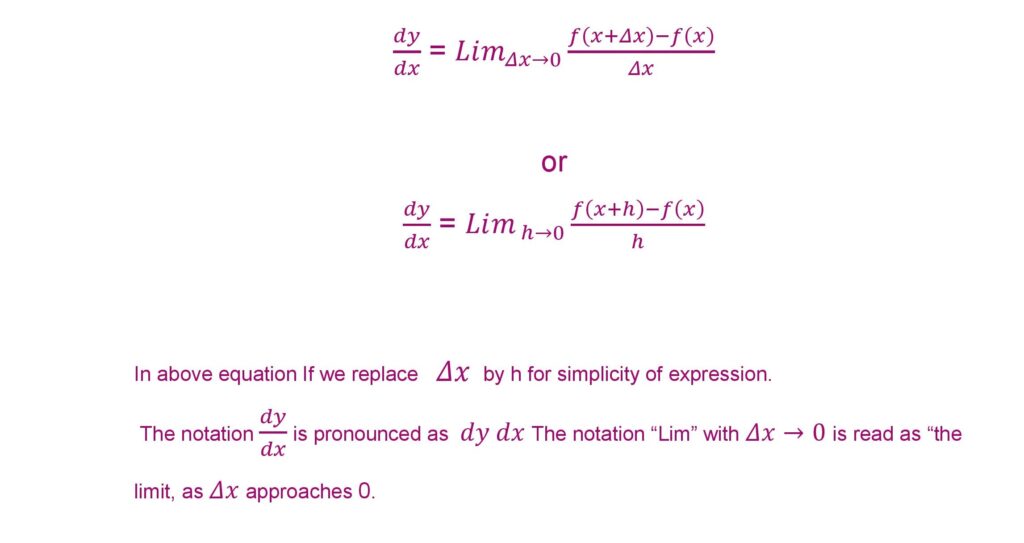
The above expression is the derivative of y or function f(x) with respect to x at point x. This also equal to slope of tangent line PT with respect to X Axis.
Derivative Example (Differential Calculus)
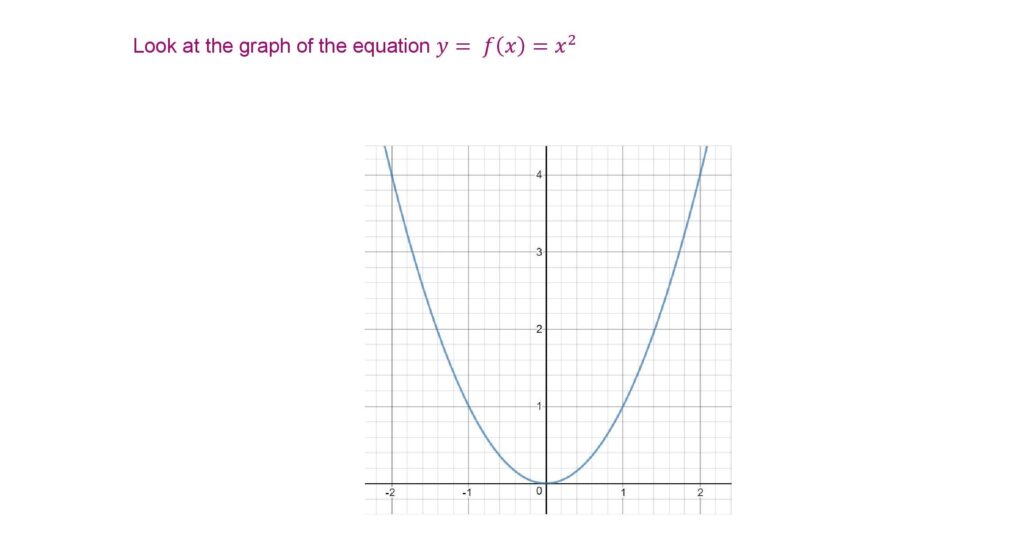
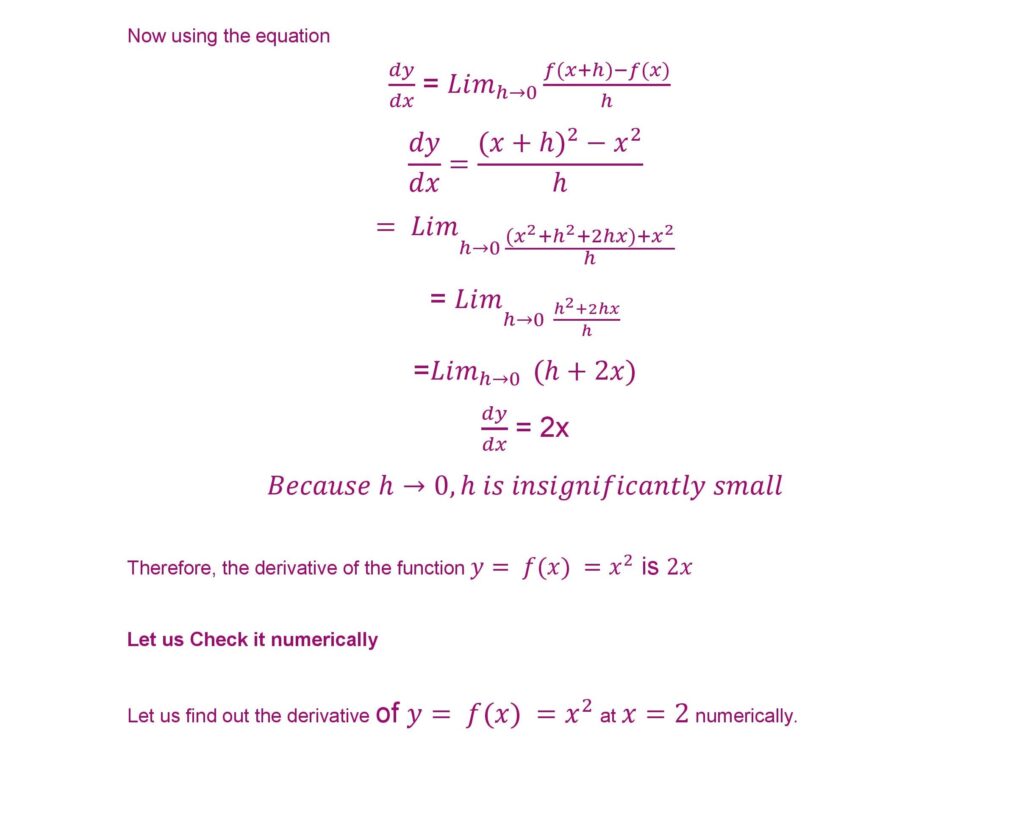
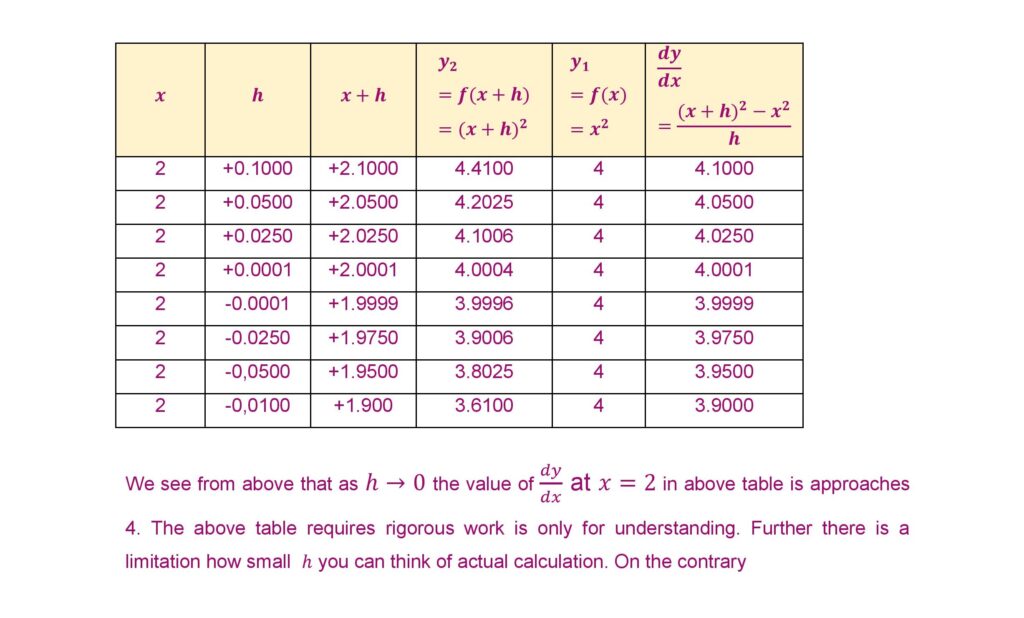
On the contrary calculus gives the result easily.
Integral Calculus
In the preceding chapter we studied differential calculus. Now shall study Integral calculus. Integral or to integrate has two meaning. First the literal meaning is “to combine (one thing) with another to form a whole” or simply to indicate whole or sum or total of. Integral calculus exhibits this feature when we find areas bounded by curves, volume of various solids, length of curves etc. The second meaning of integrate is to find the function whose derivative is given. For example the Integral calculus helps us to find the “function” itself when rate of change is available. For example, if the formula for rate of change (velocity) is given, we can use integral calculus to produce correlation between distance travelled and time. First we will study this type of integration. However, note that these two types of integration are closely connected.
Modern science and engineering use calculus extensively. It is biggest tool available in mathematics in exact thinking.
Calculus is present almost all round us. It is present everywhere. It is present in Engineering, Science and Technology, Medicine, Business, Music, Meteorology. There is hardly any area where its application is not there.
Indefinite Integral or Integration as reverse of differentiation (Differential Calculus)
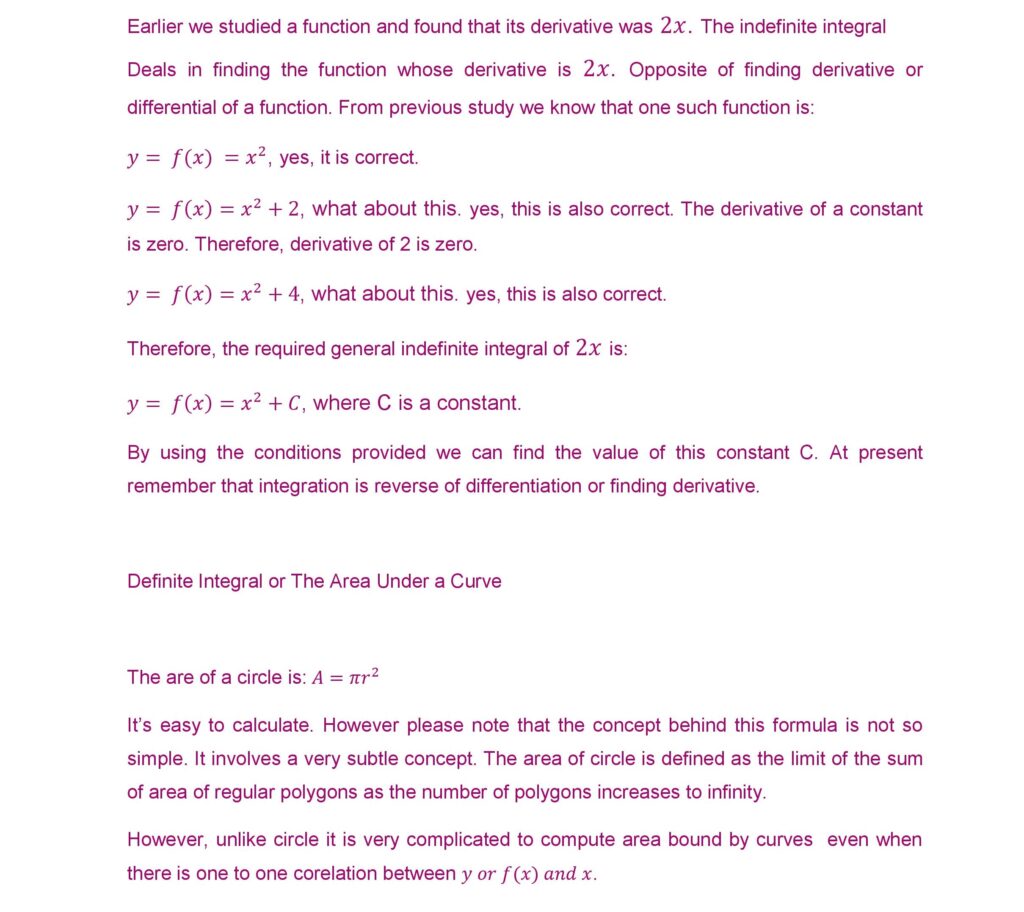
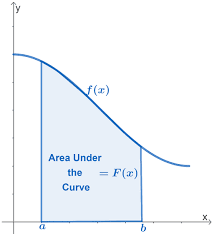
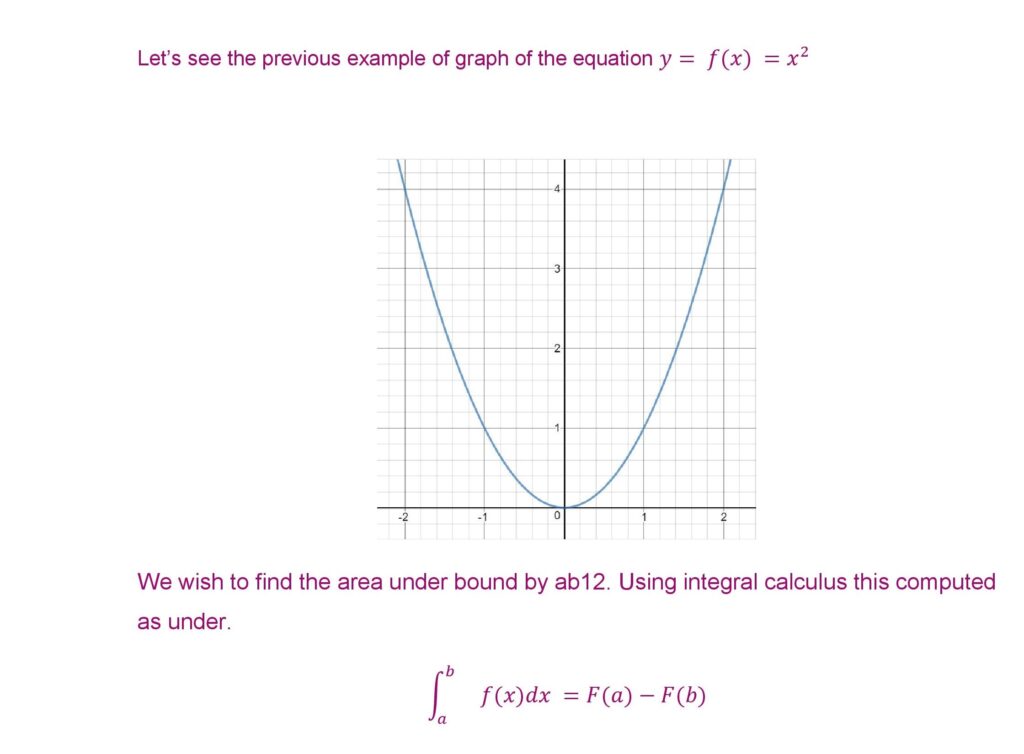
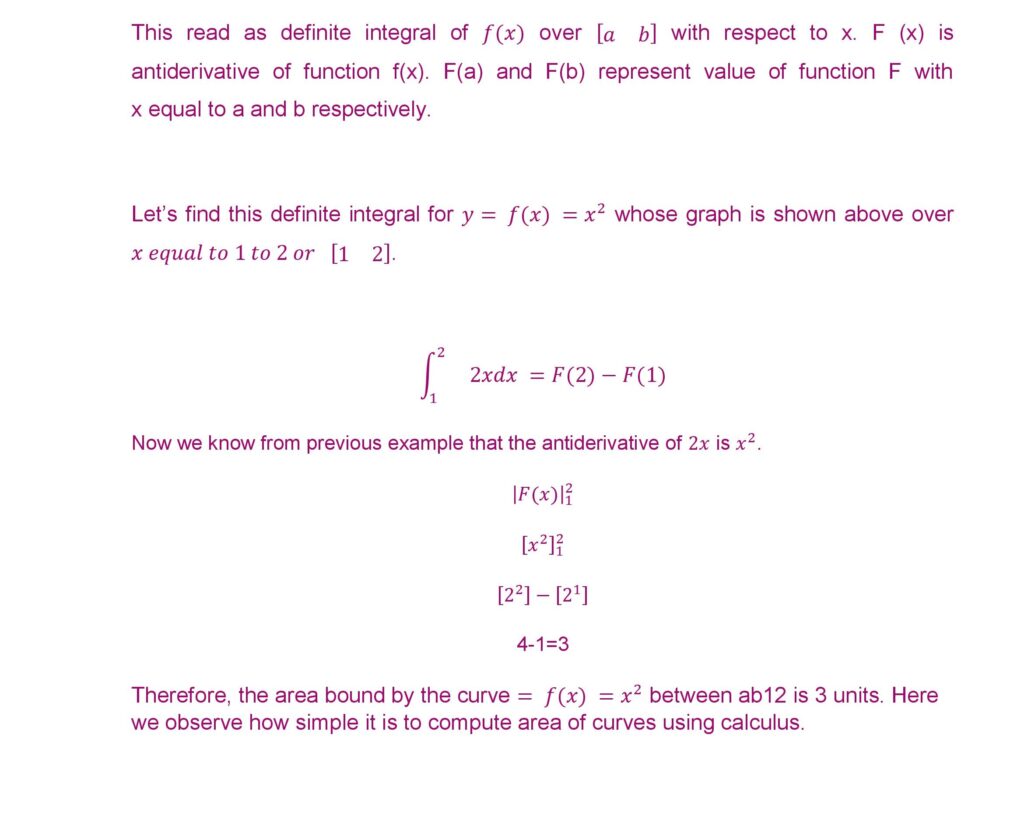
Concept of Limit in Calculus
In mathematics, a limit is the value that a function approaches as the input approaches some value. Limits are essential to calculus.
In formulas, a limit of a function is usually written as
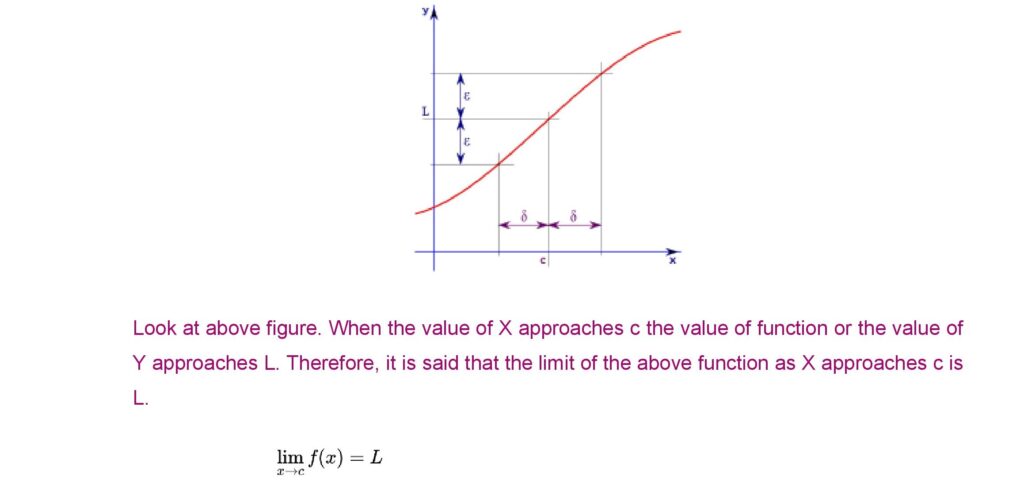
Persons Behind Calculus
There were several mathematicians who contributed for the evolution and development of calculus. But it was Sir Isaac Newton and Gottfried Wilhelm Leibniz who contributed to its growth significantly and developed fundamental theorems. It is believed that Newton and Leibniz both independently discovered Calculus. However, who discovered first was mired in great controversy. There was lot of bitterness between the two.
Newton: The Inventor of Calculus from England

Newton was born in the hamlet of Woolsthorpe England. He was the only son of a local farmer also named Isaac Newton and of Hannah Ayscough. His father died three months before Newton’s birth. Newton was a tiny and weak baby, and he was not expected to survive his first day of life. He was deprived of his father before birth. He soon lost his mother as well, because within two years she married a second time. Her husband, the well-to-do minister Barnabas Smith, left young Isaac with his maternal grandmother and moved to a neighbouring village to raise a son and two daughters. For nine years, until the death of Barnabas Smith in 1653, Isaac was effectively separated from his mother. Newton’s pronounced psychotic tendencies, excessive quarrelsomeness, extreme irritability and short-temperedness have been ascribed to this traumatic event. Here are some interesting facts about Newton. When Isaac Newton was an infant, he could fit inside a litre-size mug. Isaac Newton’s father’s name was also called Isaac Newton. When Newton was just three years old, his mother remarried and left him. His mother wanted him to be a farmer. He was bullied at school because he was shy and of quiet nature. His uncle, Rev William Ayscough helped him to get into Trinity College. He became a mathematics professor at Cambridge University at the age of 27. Students poorly attended Newton’s lectures, but he held the lectures anyway. His focus was more in his research work. He was not a smart investor. He is known for science;
however, he wrote more about religion and alchemy. Principia ( e ) was one of Isaac Newton’s most well-known books. Isaac Newton never got married.
Leibniz: The Inventor of Calculus from Germany

Gottfried Leibniz was a German mathematician who developed the present-day notation for the differential and integral calculus. He also invented an early calculating machine. Leibniz’s mother was Catharina Schmuck, the daughter of a lawyer and Friedrich Leibniz’s third wife. However, Friedrich Leibniz, his father died when Leibniz was only six years old and he was brought up by his mother. Leibniz learnt his moral and religious values from her which played important role in his life and philosophy. Here are some interesting facts about Leibniz. He Discovered Philosophy by Studying His Late Father’s Library. He developed Calculus independently of Isaac Newton. He Revolutionized the Catalogue System for Modern Libraries. Although “Leibnitz” is the traditional spelling of Gottfried’s surname, however spelling “Leibniz” was popularly adopted as that’s the way he always signed his name. The University of Leipzig refused to give Leibniz a doctorate in law in 1666 on account of his youth, however his thesis De casibus perplexis in jure was accepted by the University of Altdorf.
Also visit my you tube channel and watch the video: An overview of Calculus. This is very interesting video. Also subscribe to my you tube channel.
https://www.youtube.com/channel/UCanYlmXvNXlAyWPclPIjDWA
Thanks.


